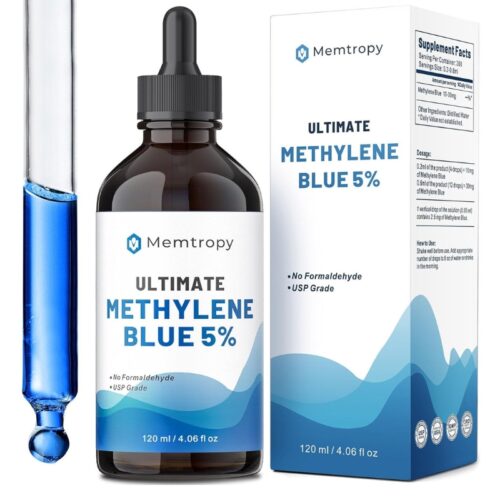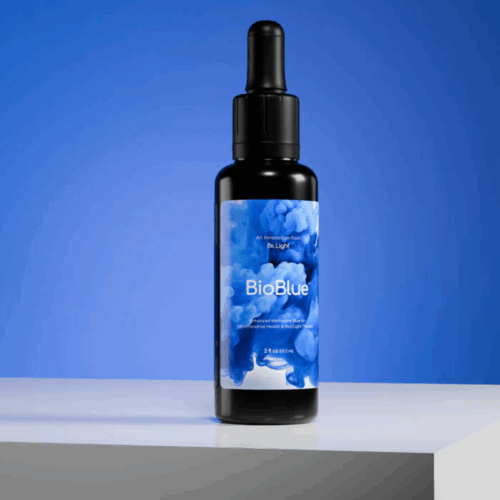Unlock the potential of cutting-edge antimicrobial therapy with Methylene Blue. This innovative solution combines the power of methylene blue and red light to effectively target and eliminate bacteria, including drug-resistant strains like MRSA. Ideal for treating infections, it promotes faster healing and minimizes complications without the risk of antibiotic resistance. Perfect for those seeking alternative therapies, our Methylene Blue product is rigorously researched and backed by promising animal studies, paving the way for a new era in infection management. Choose Methylene Blue for a safe, effective, and revolutionary approach to wound care and infection treatment.
Description
Antibiotics are losing the battle. Superbugs are evolving faster than we can invent new drugs. Infections that once cleared up in days now persist or become deadly. So, what’s the next move when antibiotics stop working?
Enter methylene blue and red light therapy, a cutting-edge combination known as antimicrobial photodynamic therapy (aPDT). This experimental approach leverages light-activated compounds to destroy pathogens—no antibiotics are required.
This article breaks down what the science actually says, based on 13 controlled animal studies and emerging human evidence. No hype. No spin. Just hard research.
What Is Antimicrobial Photodynamic Therapy (aPDT)?
aPDT is a light-based antimicrobial technique involving:
-
Application of methylene blue (MB) to an infected site.
-
Exposure to red light (typically in the 630–670 nm range).
-
Generation of reactive oxygen species (ROS) once the light activates MB.
-
Destruction of pathogens (bacteria, fungi, parasites) via oxidative damage.
Think of it as targeted microbial warfare, avoiding the rise of drug-resistant superbugs.
Summary of the Review by Cardozo et al.
The systematic review covered 13 animal studies evaluating methylene blue + red light against infections. Here's what they found:
-
Kills bacteria, including resistant strains like MRSA.
-
Effective against fungi (like Candida) and parasites (like Leishmania).
-
Accelerates wound healing with fewer complications.
-
No serious side effects reported.
-
Animals studied: mice, rats, hamsters—even penguins.
Quick Effectiveness Chart
| Infection Type | Effective in Animal Studies? | Notes |
|---|---|---|
| MRSA (bacteria) | ✅ | Highly effective with MB + light |
| Candida (fungus) | ✅ | Especially effective with full light exposure |
| Leishmania (parasite) | ✅ | Positive results in veterinary care |
| Diabetic foot ulcers | ⚠️ Partial (in humans) | Combined with antifungals |
| Nail fungus | ⚠️ Partial (in humans) | Some improvement noted |
⚠️ Caveats and Limitations
-
Most evidence is preclinical (animal-based).
-
Treatment variables (MB concentration, light dose, duration) lack standardization.
-
Newer versions like NMB and DMMB might work better but remain under-researched.
-
Light penetration is shallow, making it suitable for surface infections only.
Human Research: Promising but Preliminary
Though the review focused on animals, some early human case studies are promising:
-
Diabetic foot ulcers: Lower risk of amputation with aPDT.
-
Fungal nail infections: Some improvement, especially when combined with antifungal meds.
-
No serious adverse effects reported in human trials so far.
Still, no large-scale trials exist to confirm broad clinical use.
Top 10 FAQs About Methylene Blue + Red Light Therapy
-
Can I do aPDT at home with red light and MB drops?
Not safely. Precision is key—wrong dosage or light intensity can be ineffective or harmful. -
Is methylene blue approved for infection treatment?
No. It's FDA-approved for conditions like methemoglobinemia, but not for light-based infection therapy. -
Can aPDT replace antibiotics?
Not yet. It’s experimental and should not be used as a replacement without medical oversight. -
Does methylene blue kill all bacteria?
It’s effective against many strains—including drug-resistant ones—but not all microbes respond equally. -
Is red light therapy the same as aPDT?
No. Red light therapy alone doesn’t produce ROS. MB is essential to trigger bacterial destruction. -
Can it treat deep-tissue infections?
Unlikely. Red light doesn’t penetrate deeply; it’s best suited for surface wounds. -
Are there side effects to using methylene blue with light?
Animal and small human studies show no major side effects, but long-term safety remains under review. -
Can it help with acne or skin conditions?
Research is still limited, but early findings suggest potential for surface skin infections and inflammation. -
What’s the difference between regular MB and “New MB” (NMB)?
NMB and DMMB are modified forms that potentially offer improved efficiency, but need more human trials. -
Is aPDT covered by insurance?
Currently no, since it's not FDA-approved for infections.
Final Word
Methylene blue combined with red light shows serious potential. It kills pathogens, boosts healing, and avoids antibiotic resistance—in animals. Human evidence is building, but large clinical trials are still needed.
Until then, consult your doctor. This promising approach may become mainstream soon, but it's not ready for DIY use just yet.




